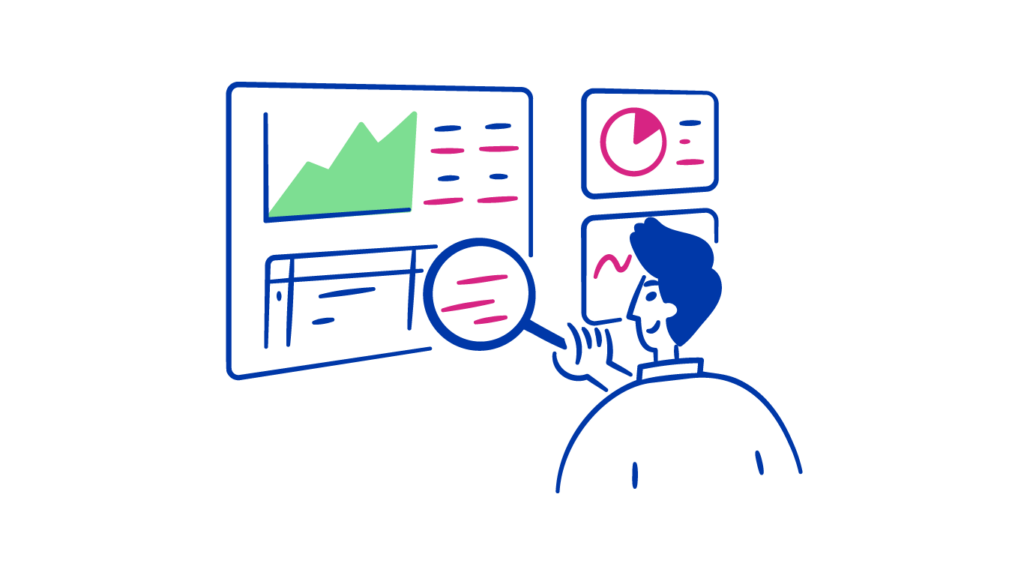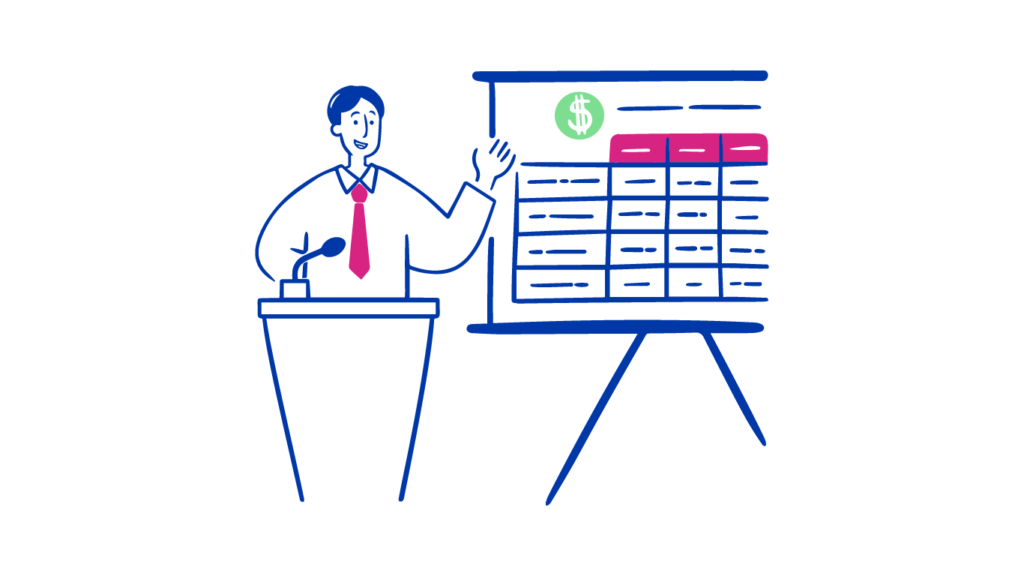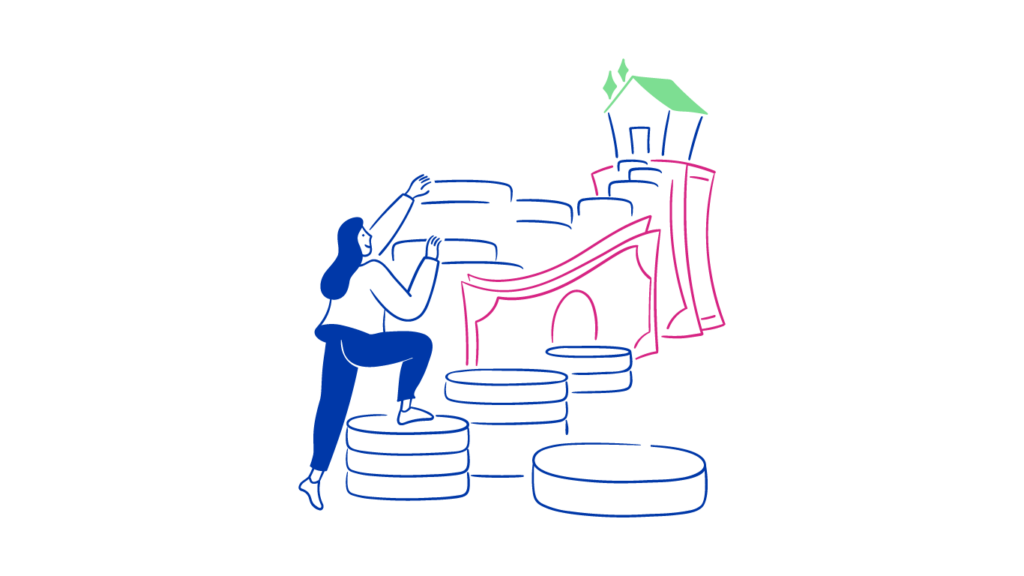The 8 Key Steps Involved In Sales Forecasting

For businesses, being able to predict revenue in an accurate manner is essential. However, research shows that 93 percent of sales leaders are unable to forecast revenue within five per cent, even with two weeks left in the quarter and 55% of sales leaders do not have high confidence in their forecasting accuracy. The benefits of accurate forecasting are plentiful, though. This shows why it is important to understand the key steps involved in sales forecasting.
This article explains what sales forecasting is, why it matters and, most importantly, how to create a strategy that enables you to do accurate sales forecasts for your business.

What is sales forecasting?
Sales forecasting involves predicting future sales revenue by estimating the volume and value of sales that a sales rep, sales team or business in general will make over a set period of time. You might have forecasts for each week, month, quarter or year.
Accurately anticipating how many deals you are likely to close in a specific timeframe should be based on solid data extracted from past performance, factoring in internal and external metrics that could affect future sales. These factors could include:
| Internal Factors | External Factors |
| Promotion policy | Pandemic (e.g. COVID-19) |
| Marketing policy | Economic trends, including a slowdown |
| Product pricing | Economic stimulus measures from the government |
| Sales training opportunities | Weather trends |
| Product launches | Oil and petrol prices |
Forecasting is used to predict cash flow and ease of financing, as well as inform decision-making within the business.
Why sales forecasting is important
- Being able to accurately understand how much money will come into the business is imperative when predicting and managing risk for the business as well as when planning and budgeting. Your business should always be striving to move forwards and it is not possible to make decisions with any confidence unless you have reliable forecasts at hand.
- If you know your likely costs and revenue in advance, you gain a better understanding of your sales performance. If the forecast is lower than you expect, this allows you to adjust your strategy in advance, before the business finds itself in trouble. If the prediction is that you are growing at a faster rate, you can lay the groundwork for a possible acquisition or expansion.
- For sales teams, gaining insight into their forecasts helps them understand whether their sales pipeline is running as efficiently as possible.
- The business can use sales forecasting to plan for future sales. They can use the data to ensure there are adequate levels of inventory and enough staff to cope with demand.
In addition, Aberdeen found that 97% of companies that implemented a strong forecasting strategy achieved their quotas, compared to 55% of those that did not.
What should be included in a sales forecast?
In order to make a sales forecast, you should make an estimate on the number of units or services you will sell, based on:
- Historic data from the sales rep or team. This includes the usual length of the sales cycle, past sales they have made, customers that they have worked with, how often deals close at each stage of the pipeline and anything else that provides an insight into future performance.
- The internal factors that might affect the sales process, such as marketing pushes and changes to product lines.
- The external factors that might affect the sales process, such as market conditions and regulatory changes.

The 8 Steps Involved In Sales Forecasting
1. Determine goals
The first step of sales forecasting is to work out what your goal is and what area you want that forecast to focus on. You might choose to predict:
- The number of products you will sell
- The number of new customers you will onboard
- Your annual recurring revenue, if you sell software as a service (SaaS), for example.
This helps you choose the right metrics and data to use when conducting your sales forecast, ensuring you get a result that is relevant to your priorities.
2. Understand the market
There is no point in comparing the conditions that you are working under with those that affect other sectors. For example, during the winter, the market conditions improve for energy companies because they supply more electricity and gas to households, but could become worse for the hotel industry, with fewer people taking holidays.
You should also define the market segment that you will target in your forecast so that you can make sure you are applying the correct information relating to external factors that affect revenue. Rather than simply comparing your future performance against the retail sector as a whole, try to be more specific. If you are a major chain that sells high-end goods, external factors will create different outcomes, both good and bad, from those felt by independent, budget retailers.
3. Understand your sales cycle
The timescale for your forecasts depends on the average length of your sales cycle. If you make many sales every week, it will make sense to forecast a shorter distance ahead than if your cycle takes a matter of months.
Here is how often different types of businesses forecast:
| Frequency | Type of business |
| Weekly | Businesses that make high volumes of sales should forecast on a weekly basis, as this data is constantly updating and developing. |
| Monthly | If it takes a month or two to go from first engagement to closing the deal, then monthly sales forecasting is important to keep track of these prospects. |
| Quarterly | If your sales cycle is any longer, then a quarterly forecast is more appropriate because the status of each deal does not change as often as that of shorter cycles. |
4. Select techniques
The technique for sales forecasting that you employ will depend on the type of organisation and what you want to achieve with the forecast. Some types of sales forecasting methods include:
| Sales Forecasting Methods | What it involves |
| Opportunity Stage Forecasting | Predicting the likelihood of the deal closing based on where it is in the sales pipeline. |
| Sales Cycle Forecasting | Predicting the likelihood of the deal closing based on how long the lead has been active in relation to your average sales cycle. |
| Intuitive Forecasting | Using the knowledge of the sales rep in order to predict when the deal will close and what the value of it will be, based on their opinion. |
| Historical Forecasting | Looking into the same period in the previous year to predict how many sales you will make this year. |
| Multivariable Analysis Forecasting | Combining multiple methods to predict the chances of making a sale. |
5. Collect historical data and reports
If you do this, you will have a great deal of rich sales data that you can call on to inform your forecasting efforts. Don’t just look at the last week, month, quarter or year, as that might have been unusually successful or unsuccessful and will not give an accurate picture of where you are and where you are going.
Take a look at the factors affecting each time period, such as:
- Deal slippage – when the expected closing date for the deal slips into the next period
- Sales velocity – the speed with which you bring in revenue on your deals
- Conversion rate – how many leads turn into customers
- Sales pipeline coverage – the relationship between the amount of money in the pipeline and your sales targets.
The trends in these areas over time will help you gain a better understanding of where you are heading in terms of your sales quotas, targets and future revenue.
6. Check back to analyze previous forecasts
As you are aiming for accuracy with your sales forecasts, it is important to check back on the previous year’s forecast and see if you can learn anything from it. How close was it to the reality of the situation?
If there are any large discrepancies, what can you learn to hone your forecasting skills this time around?
It might have been that something completely unexpected occurred that could not have been foreseen. However, you might have failed to account for market conditions that you either missed or underestimated. Use this insight to streamline your sales forecasting process going forwards.
7. Test your forecasting method
Before you try out the forecast in real life, you can run a test to see how accurate your sales forecasting methods could be. Essentially, use the sales data that you have collected above and run your method as if you were forecasting that period of time again. When you get the results back, you will be able to see how close your chosen model is to what happened.
Try this with a few methods and you will begin to see which are most reliable for your individual needs, business model and industry.
8. Formalize the process
Once you have tested the methods and discovered which sales forecasting model works best for you and your sales team, formalize your new sales forecasting process so that you can run the most accurate forecast possible for your business.
Key features of effective forecasting software
Using sales forecasting software means that you can improve the accuracy of your predictions and create better value for your business. The software, often using artificial intelligence, will bring a wide variety of benefits, including:
- Running simulations of different models so that you can gauge the most accurate method for your business without getting bogged down in complicated spreadsheets
- Staying on top of trends in your industry, as well as within your business
- Being able to accurately predict sales in different sectors, locations and for different products.
FAQ
Who should be involved in the forecasting process?
The sales manager is ultimately responsible for the sales forecasting process, but input from other sources will create a better system that takes into account every aspect that can affect the accuracy of the forecast. Using the expertise and experience of the reps on your sales team is important, as is consulting with your customer relationship management system and understanding the marketing team’s strategy. HR could be involved too, being able to advise sales leaders on staff numbers and availability, which could affect future productivity and, therefore, sales.
What is Quantitative Sales Forecasting?
Quantitative sales forecasting is a way of predicting sales using hard historical data. It is seen as objective because there is evidence to back up the results, taken from previous years’ sales data. Quantitative methods use precedents to gain valuable insights and predict the future.
What is Qualitative Sales Forecasting?
Qualitative sales forecasting is more subjective and is based on the experience and instinct of those predicting future performance. Your sales team may use qualitative forecasting because they understand the individual customer and their needs and feel they can predict how they will act towards the sales activities better than a mathematical model can.
Conclusion
The ability to predict the future would be a real boon in any walk of life, including business. We can never do so with any level of certainty, but using an accurate sales forecasting process, we can try to get as close as possible using the resources at hand. Whether it is hard data, experience and expertise, or a combination, these steps involved in sales forecasting will help you work out the process that best works for your sector and allows you to make informed decisions and enjoy the many benefits of accurate forecasting.
fullinfo is here to help sales leaders improve and speed up their sales process with accurate contact data. Try it free here.
References and Further Reading
- The Seven Defining Qualities Of A Good Sales Team Leader
- Sales forecasting types (VIDEO)
- How to Dramatically Improve Your Sales Pipeline + Examples
- [Ultimate Guide] How To Monitor The Performance Of Sales Staff
- 9 Modern Sales Forecasting Techniques (With Examples)
- Master These Proven Sales Closing Techniques to Boost Your Results
- Forecast templates
- Sales forecasting real-life scenario
- Sales forecast example